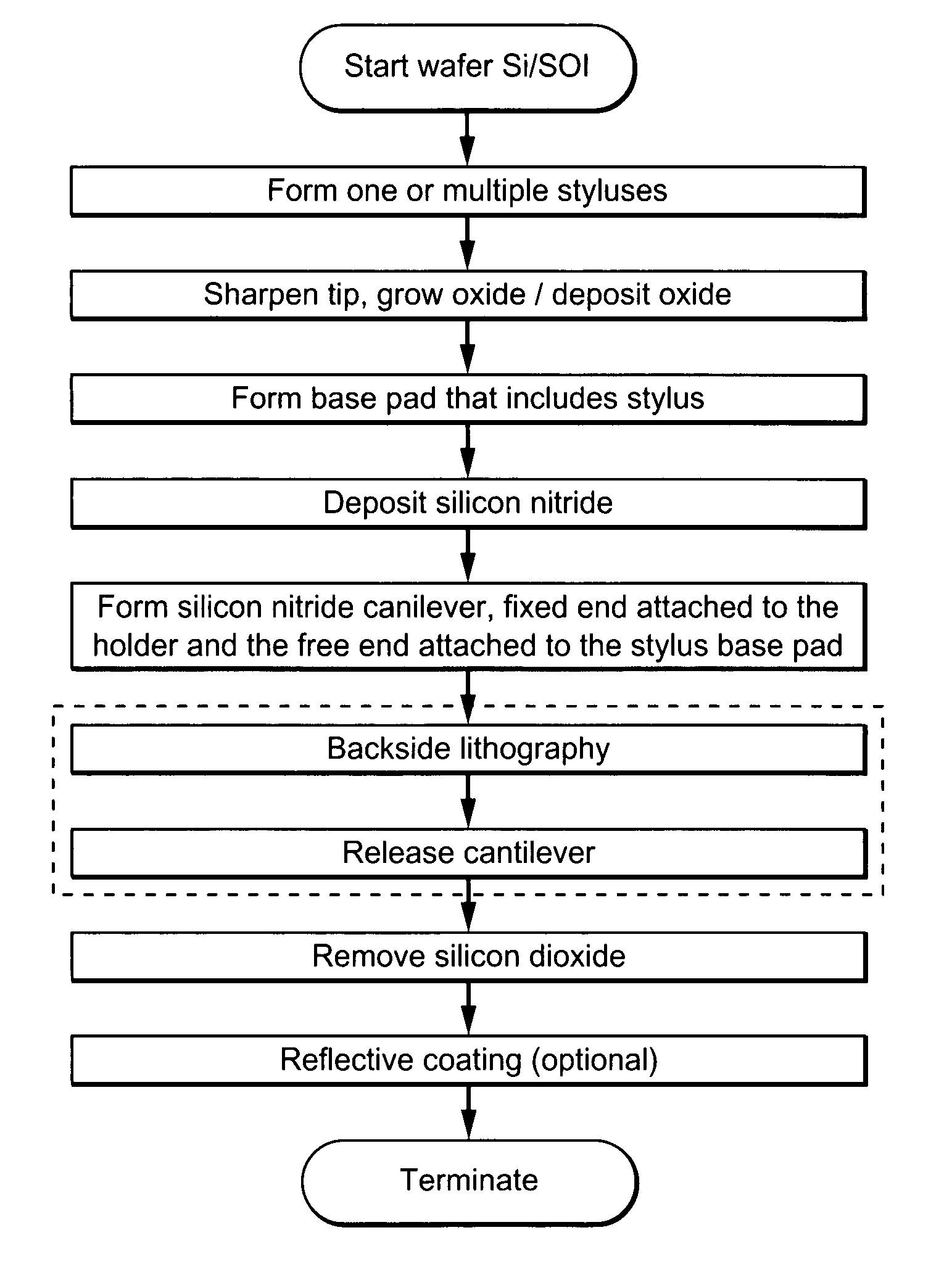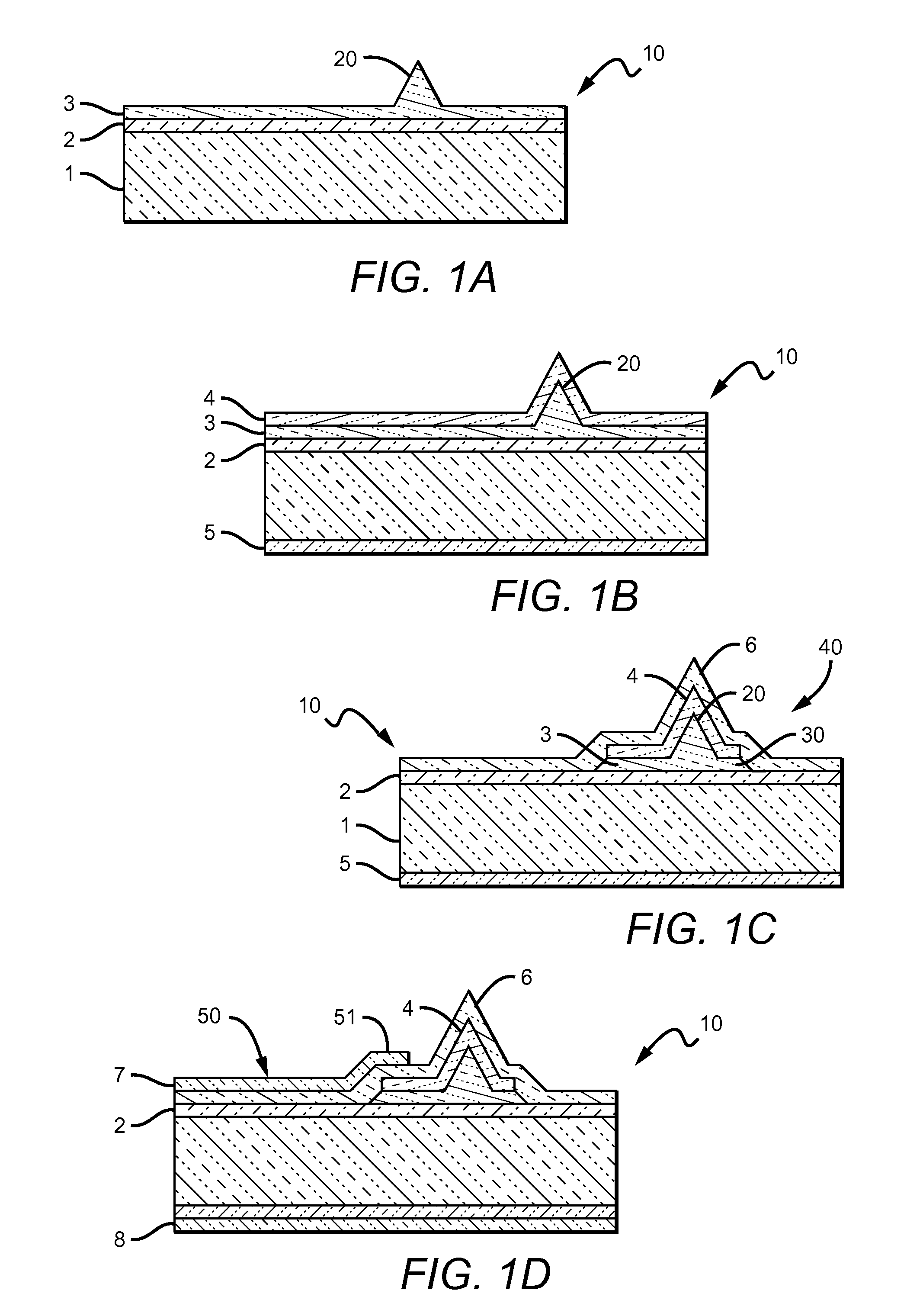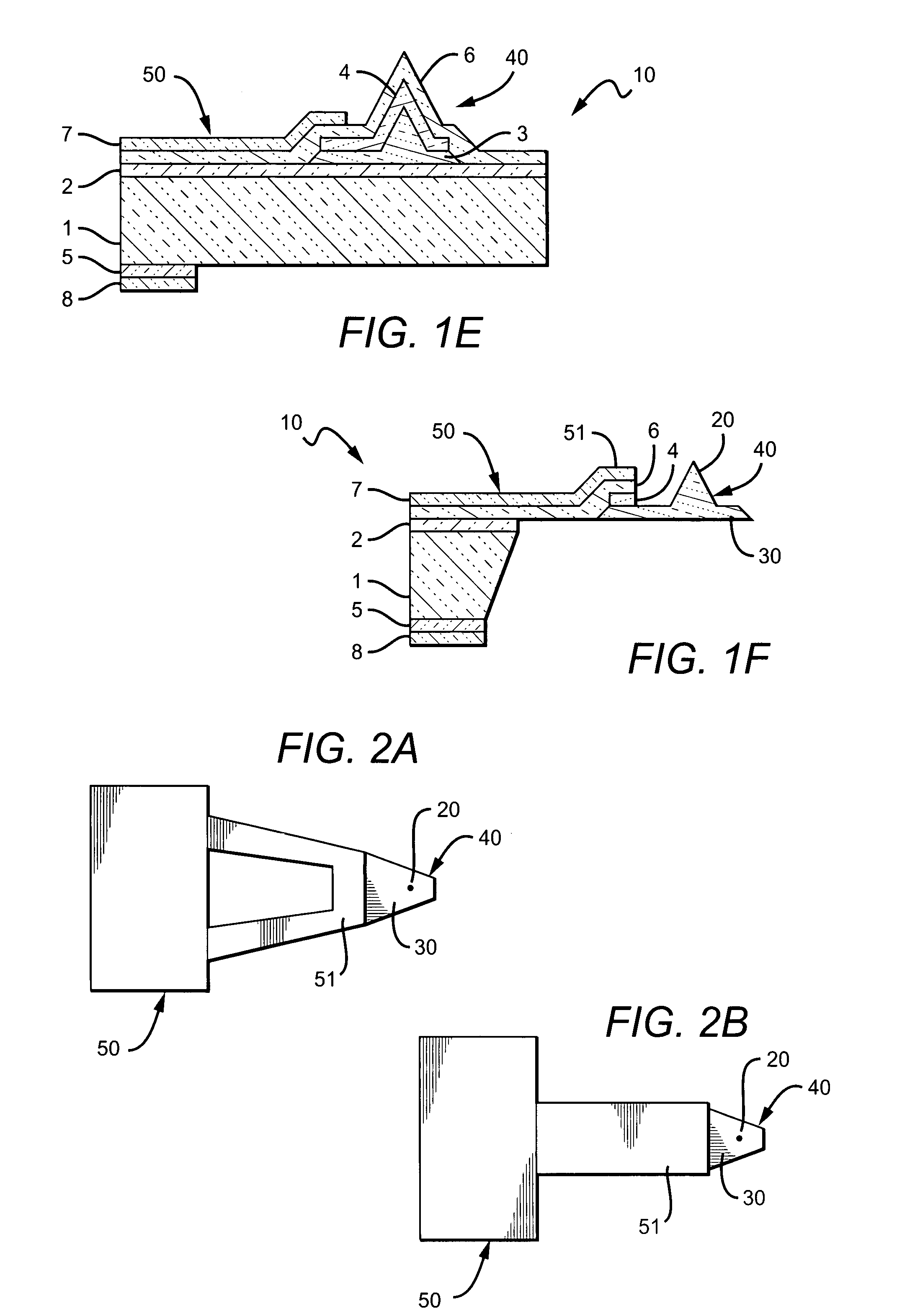Scanning probe devices and methods for fabricating same
a scanning probe and probe body technology, applied in the direction of mechanical measurement arrangement, mechanical roughness/irregularity measurement, instruments, etc., can solve the problems of inherently large radius of curvature of the tip, poor sharpness of the tip, and difficulty in controlling the thickness of the fabricated cantilever of less than about 1 m of silicon, etc., to achieve the effect of easy fabrication
- Summary
- Abstract
- Description
- Claims
- Application Information
AI Technical Summary
Benefits of technology
Problems solved by technology
Method used
Image
Examples
Embodiment Construction
[0037]The following description presents preferred embodiments of the invention representing the best mode contemplated for practicing the invention. This description is not to be taken in a limiting sense but is made merely for the purpose of describing the general principles of the invention whose scope is defined by the appended claims.
[0038]The present invention provides scanning probes in which a cantilever contacts a stylus via an integrated stylus base pad, and methods for fabricating such probes. The probe offers many advantages over other types of scanning probes with respect to tip sharpness, optional reflective coating, flexibility with respect to functionalizing the tip, and minimal thermal drift due to reduced bimorph effect. These features facilitate the acquisition of high resolution images of samples in general, and particularly in liquids.
[0039]Other features and advantages of the invention will be apparent from the following detailed description when taken together...
PUM
| Property | Measurement | Unit |
|---|---|---|
| Width | aaaaa | aaaaa |
| Reflection | aaaaa | aaaaa |
Abstract
Description
Claims
Application Information
 Login to View More
Login to View More - R&D
- Intellectual Property
- Life Sciences
- Materials
- Tech Scout
- Unparalleled Data Quality
- Higher Quality Content
- 60% Fewer Hallucinations
Browse by: Latest US Patents, China's latest patents, Technical Efficacy Thesaurus, Application Domain, Technology Topic, Popular Technical Reports.
© 2025 PatSnap. All rights reserved.Legal|Privacy policy|Modern Slavery Act Transparency Statement|Sitemap|About US| Contact US: help@patsnap.com



